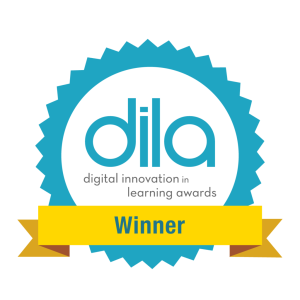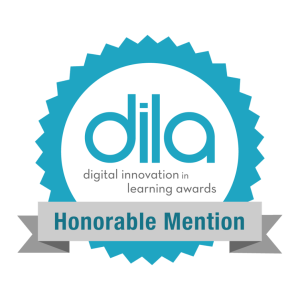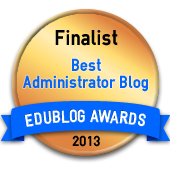Monthly Archives: December 2015
Alternate Endings
This is a guest blog post written by Mrs. Emilie Garwitz. Emilie is a Kindergarten Teacher at Greenwood Elementary, and this is her first blog post. Please connect with her on Twitter @MrsGarwitz and throw some support/encouragement her way. (Emilie and her team are doing some extraordinary work with students.)

We all know the endings to familiar stories: the shoe fits, Cinderella marries the prince, and Harry Potter defeats Voldemort to save the wizarding world. We find ourselves often thinking and talking about endings long after we have finished reading. Generations of teachers have challenged learners to use their creative talents to write alternate endings to these beloved tales. But how do we tailor this classic method to our current generation of learners – the next innovators in our world? In what ways can we apply 21st century skills such as collaboration and creativity to the learning experience and standards? And, what if the artifacts of learning lived on beyond the lesson using digital tools relevant to young students?
Recently, my kindergarteners have been fascinated by the alternate endings to the gingerbread man story. I wanted to take their energy and dive deeper. The classic method would have been to have my students use their creativity to write a new ending. And the challenge was that kindergartners’ writing skills and stamina are still developing. So I asked myself, what motivates them? What tools can I give them to help them be successful when so many of their skills are still in progress?
This is when I turned to our school’s mobile Makerspace carts and challenged my students to build alternate endings to the gingerbread man. The objective was kindergarten friendly: I can create a new ending to the gingerbread man using legos. The results were astounding. My students planned, collaborated, shared, built, created, and reflected for over an hour – a long time our youngest learners. Their creativity stretched well beyond my highest expectations and the experience was authentic and meaningful. They changed the characters, the setting, and more. One group’s version of the story had a copy machine that the gingerbread man used to make twenty copies of himself in order to outfox the fox.
“We’re engineering!” one student exclaimed. This was the moment when I started thinking about the possibilities for their future. I was not just teaching a skill, I was imparting on kids a new mindset – an engineering mindset. Building their alternate endings was cross-curricular. During the planning stages, I looked up how many standards connected to this objective and was blown away.
While learning to write and practicing writing are critically important, this whole exercise made me reflect on the choices I make as a teacher. Maybe I should not limit their tools in the classroom when it’s time to create. How could using tools that are relevant and motivating to students change the learning experience?
After an hour of innovating, it was time to take apart the creations – such a hard thing to do for both teachers and students after so much time, effort, and creativity are spent. But what if the learning does not stop when the last lego brick is cleaned up? What if we could make time in the classroom to help students’ ideas and work live on? Enter, Google Drive. When students take pictures of their own work, upload it, and share via the Drive with their families, they truly own every step of the learning experience. Digital learning is relevant to students and the ability to share learning with families helps connect us.
Every teacher savors that moment when her students achieve bigger things than she ever dreamed possible. Witnessing 5 and 6 year-olds upload photos of their creations to Google Drive was one of those seminal moments. Most people might hear “Google Drive and kindergartners” and think “that can’t end well.” I guess you could say my class created an alternate ending of our own.
Within Reach

The teacher-observation process provides me access and insight into classroom learning experiences that very few people have. I’m consistently inspired by the relevant and connected learning I observe. Recently I was in a classroom and I didn’t want the lesson to end. As I was watching the lesson unfold, I knew that what I was experiencing was also within reach of classrooms and schools everywhere.
Here are some of the salient things I observed during the lesson:
- I observed an elementary Language Arts lesson.
- A clear learning target based upon state standards guided the learning process.
- The teacher used one of our Mobile MakerSpace carts to teach students how to create an alternate ending to a text by manipulating various elements of the plot.
- Students constructed models depicting their alternate story endings using Lego building bricks from the MakerSpace cart.
- Students were empowered to collaborate on plans for their alternate story endings and projects.
- Students had opportunities to talk, create, experiment, fail, and redesign.
- The teacher purposefully connected with individual students and small groups to elicit high-level thinking and scaffold as appropriate.
- Formative assessment was seamlessly interwoven through the lesson.
- Students presented their creations to the class near the conclusion of the lesson. This public speaking provided students time to explain their thinking, and the teacher was able to use some metacognition connected to the learning target.
- Students used digital tools to curate their work so it could be referenced in the future and shared with parents.
- As part of this process, students photographed their projects and uploaded them to Google Drive to share their learning with their families.
- Students did not want the lesson to end. (Based on what I was seeing, kids would’ve opted to skip recess if given the opportunity.)
- The teacher ensured that the lesson was led by learning; not tools, technology, or activities.
- This was an authentic learning experience that was scholarly and highly relational.
Did I mention that this was a kindergarten language arts lesson?! That’s right…our youngest learners were empowered to innovate, collaborate, present, and curate their work using digital tools.
At one point one of the kindergarteners yelled out in exuberence, “Teacher…we’re engineering!” and her amazing teacher responded, “Yes…you are designing and building.” Kids were making connections to past conversations about design, building, and engineering.
During our observation post-conference I invited the teacher to share her reflections in a blog post instead of the traditional electronic form required by the district. I knew that we could meet the requirements of the standard district form by copy/pasting reflections from a blog post if the teacher was interested in pursuing this. (Stay tuned for her reflections and first blog post…)
I am convinced that a paradigm shift is underway in education because I see it every day at Greenwood Elementary. A new and connected learning paradigm that puts students in the center of their learning is possible. Deeper learning that’s both relevant and connected is within reach!

Image Credits:
1.) “Sparkler” photo from Pixabay (Creative Commons)
2.) “Kindergarten Collaboration & Digital Curation” photo from Greenwood Elementary













